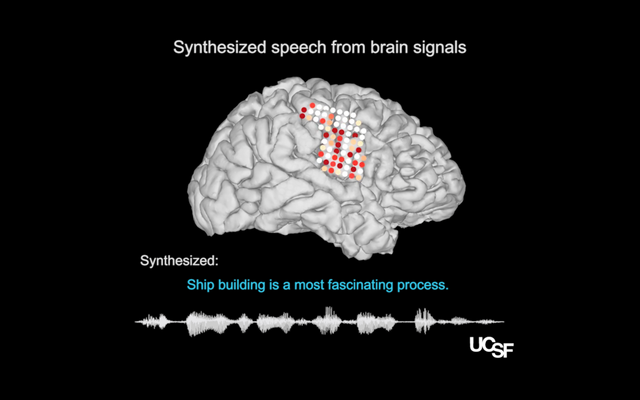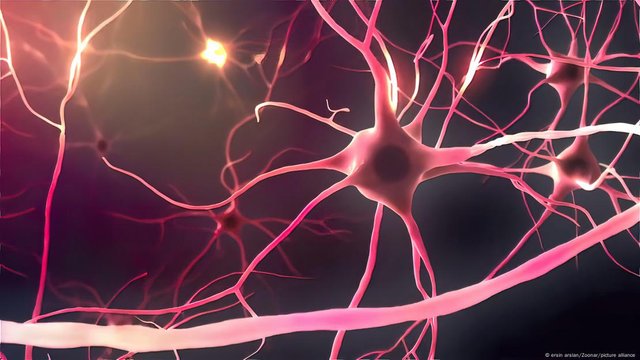Scientists manage to translate thoughts into words/Científicos logran traducir pensamientos en palabras

Source
We all have an inner voice, a kind of invisible inner friend with whom we have long conversations without being able to call ourselves schizophrenic or put ourselves in a straitjacket. Curiously, these dialogues are produced in the language we normally use, so in theory, these dialogues could be deciphered and converted into voice. That's basically what a group of scientists at Stanford University have done, translating this inner language into words, achieving an accuracy rate of around 74%.
Todos tenemos una voz interior, una especie de amigo interno invisible con el que mantenemos largas conversaciones sin que por ello se pueda hablar de esquizofrenia ni de colocarnos una camisa de fuerza. Curiosamente estos diálogos se producen en el lenguaje que utilizamos habitualmente por lo que en teoría se podrían descifrar estos diálogos y convertirlos en voz. Eso es básicamente lo que han hecho un grupo de científicos de la Universidad de Stanford , traducir ese lenguaje interno en palabras logrando una precisión que ronda el 74%.
Using a system of microelectrodes implanted in the motor area of the brain, this group of researchers was able to record neural patterns associated with thoughts and train artificial intelligence models capable of converting imagined phrases from a large vocabulary of up to 125,000 words into written text. Advanced artificial intelligence algorithms then receive these signals and convert them into text, differentiating between the attempt to articulate words and the simple act of thinking them.
Utilizando un sistema de microelectrodos implantados en el área motora del cerebro, este grupo de investigadores lograron registrar patrones neuronales asociados a pensamientos y entrenar modelos de inteligencia artificial capaces de convertir frases imaginadas de un amplio vocabulario de hasta 125,000 palabras en texto escrito. Posteriormente algoritmos avanzados de inteligencia artificial reciben esas señales y las convierten en texto, diferenciando entre el intento de articular palabras y el simple acto de pensarlas.

Source
Although technologies capable of decoding thoughts and converting them into words or text already existed, the recent advancement significantly surpasses previous versions for several key reasons. Early technologies required lengthy, personalized training sessions for each user, often based on extensive recordings of brain activity while the person listened to stories or thought of specific phrases, and this proved impractical for patients with severe speech disorders.
Aunque ya existían tecnologías capaces de decodificar pensamientos y convertirlos en palabras o texto., el avance reciente supera significativamente a las versiones anteriores por varias razones clave. Las primeras tecnologías requerían largos entrenamientos personalizados para cada usuario, a menudo basados en grabaciones extensivas de la actividad cerebral mientras la persona escuchaba historias o pensaba frases específicas y esto resultaba poco práctico para pacientes con graves trastornos del habla.
Previous systems could only translate single words, short phrases, or the general meaning of stories, but not natural, fluent language in real time. Many methods required invasive brain implants or used functional magnetic resonance imaging (fMRI), which limited their practical use and processing speed. The new models can operate without extensive prior training with language data from the patient themselves, using functional alignments and transfers between participants, making them easier for people with aphasia or severe disabilities.
Los sistemas anteriores solo podían traducir palabras sueltas, frases cortas o el significado general de relatos, pero no lenguaje natural y fluido en tiempo real. Muchos métodos requerían implantes cerebrales invasivos o utilizaban resonancia magnética funcional (fMRI), lo que limitaba su uso práctico y la velocidad de procesamiento. Los nuevos modelos pueden funcionar sin entrenamiento extenso previo con datos lingüísticos del propio paciente, usando alineaciones funcionales y transferencias entre participantes, lo que facilita su utilidad para personas con afasia o discapacidad severa.

Source
It is now possible to decode entire thoughts and internal monologues with much greater accuracy and speed, even text with a broad vocabulary and complete sentences, approaching natural communication. For the first time, models are available that can be applied to different people, not just those who have trained the system from scratch. In addition to text, there are explorations to decode images, emotions, and even the intention behind thoughts, opening new horizons for communication and neurological treatment.
Ahora se logra decodificar pensamientos y monólogos internos completos con mucha mayor precisión y velocidad, incluso texto de vocabulario amplio y frases completas, acercándose a una comunicación natural. Por primera vez se consiguen modelos que pueden aplicarse a diferentes personas, no solo a quienes han entrenado el sistema desde cero. Además del texto, existen exploraciones para decodificar imágenes, emociones y hasta la intención detrás del pensamiento, lo que abre nuevos horizontes para la comunicación y el tratamiento neurológico.
Unfortunately, all of this technology is currently in the experimental phase and is used primarily on volunteer patients with severe motor disabilities. The future goal is to achieve accuracy levels above 90% and develop noninvasive systems to democratize access to and use of this technology. Furthermore, a strict ethical protocol for its clinical application is required. But there is no doubt that this advance opens the door to a new era of communication, especially for those who cannot speak, offering hope and autonomy to millions of people around the world.
Lamentablemente toda esta tecnología por ahora está en fase experimental y se usa principalmente en pacientes voluntarios con graves discapacidades motoras. El objetivo futuro es alcanzar precisiones superiores al 90% y desarrollar sistemas no invasivos, para democratizar el acceso y uso de esta tecnología. Además se requiere desarrollar un estricto protocolo ético para su aplicación clínica. Pero no cabe duda de que este avance abre la puerta a una nueva era de comunicación, especialmente para quienes no pueden hablar, ofreciendo esperanza y autonomía a millones de personas en el mundo.
More information/Más información
https://www.smithsonianmag.com/smart-news/science-fiction-think-again-scientists-are-learning-how-to-decode-inner-thoughts-180987194/
holaaa amigo feliz diaa, espero que estes muy bien, te mando un abrazo
0.00 SBD,
0.49 STEEM,
0.49 SP
Hola Oneidaa, un placer volver a leerte. Yo también espero que te vaya muy bien.